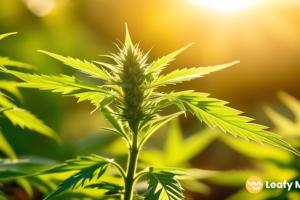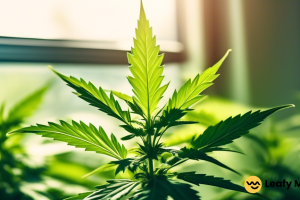Senate leaders introduced legislation Thursday to remove federal prohibitions on marijuana a half of a century after Congress deemed it illegal. Senate Majority Leader Chuck Schumer has proposed the Cannabis Administration and Opportunity Act that would federally decriminalize weed and allow states to form their marijuana laws without retribution from Washington D.C.
Cannabis Administration and Opportunity Act (CAOA) has been in the works for a while. Schumer and Democratic Senators Ron Wyden of Oregon and Cory Booker of New Jersey proposed a discussion draft in early 2021. While it may not pass through the Senate, the legislation will mold the conversation around cannabis legalization in the future. Some of its’ components will likely find their way into other bills that will be proposed later this year.
Is there Bipartisan Support?
In April of 2021, Pew Research Center reported that 72 percent of Democrats and 47 percent of Republicans support medical and recreational cannabis legalization. Republicans in all age groups favored legalizing medical marijuana use. Out of Republicans over 65 years old, only twelve percent think cannabis for medicinal use should remain illegal.
The legislation offers something for Democratic and Republican supporters, including:
- It provides a path for the expungement of federal marijuana-related offenses.
- It creates funding to fight illegal cannabis cultivation.
- It establishes grant programs for small business owners entering the cannabis industry from communities disproportionately affected by the War on Drugs.
- It requires the Department of Transportation to develop national regulations for driving under the influence of marijuana.
- It restricts cannabis marketing to minors.
What else is included in the bill?
The Cannabis Administration and Opportunity Act is close to 300 pages long, covering many cannabis-related topics.
Here, we’ll provide the highlights:
- CAOA requires re-sentencing and expungements of some cannabis-related records.
- The bill places a range of federal excise taxes on producers and cannabis businesses.
- Tax-funded grant programs will offer job training, assistance reentering society after incarceration, and help to secure legal aid.
- Federal employers could not drug test employees for marijuana, with exceptions for law enforcement and national security.
- 21 and older would become the minimum age to purchase weed in the United States.
- CAOA would take marijuana off of the federal Controlled Substances list.
- The FDA would create an internal Center for Cannabis Products to regulate production, labeling, distribution, and sales within the cannabis industry.
- Prohibition states could not prohibit cannabis products from being transported between legal states.
- The DOJ would offer grants to hire law enforcement, offer community outreach, and eliminate the illicit market.
- Veterans would get expanded access to medical cannabis through physicians with the U.S. Department of Veterans Affairs.
- The Government Accountability Office would facilitate marijuana policy studies on safety and compliance.
- The Department of Health and Human Services and the National Institutes of Health would research the effects of marijuana.
- CAOA would increase the amount of cannabis provided for scientific research.
- The legislation provides funds to deter youth from using cannabis and driving while impaired.
How Will the Cannabis Administration and Opportunity Act of 2022 Impact the Schedule I Classification of Marijuana?
The proposed marijuana scheduling update outlined in the Cannabis Administration and Opportunity Act of 2022 could lead to significant changes in the Schedule I classification of marijuana. This legislation has the potential to reshape the legal landscape surrounding cannabis and create new opportunities for businesses and consumers alike.
Many States Support Ending Cannabis Prohibition
In 1996, California became the first state to initiate marijuana law reform and legalize marijuana for medical use. Today, nineteen states plus the District of Columbia allow people to use marijuana for specific medical conditions such as chronic pain and intractable epilepsy.
Several other state lawmakers, such as South Dakota, are expected to consider legalizing marijuana sales in upcoming years. There has been significant support for legalizing recreational marijuana use in recent years, and recreational cannabis sales have skyrocketed in legal states.
In 2012, Washington and Colorado became the first states to legalize recreational marijuana. In 2017, California became the most significant state to legalize recreational marijuana.
Currently, 19 states where recreational marijuana is legal at a state level and 36 states (as well as the District of Columbia, Guam, Puerto Rico, and the U.S. Virgin Islands) have approved medical cannabis programs. Many states allow the home cultivation of up to six plants per resident.
A Pathway to Criminal Justice Reform
CAOA provides the guidelines to establish federal regulations to protect public health and safety. It prioritizes restorative and economic justice to help undo the long-term harm caused by the failed War on Drugs.
It seeks to end cannabis discrimination, provides significant investments for cannabis research, and strengthens worker protections regarding marijuana use. By decriminalizing cannabis at the national level, this legislation also ensures that legal cannabis businesses will no longer be denied access to financial services due to their participation in the cannabis industry.











Leave a Reply